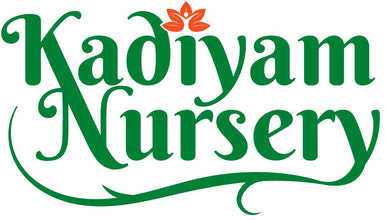-
Plant Description:
-
Melastoma decemfidum is a species of flowering shrub in the family Melastomataceae. It is commonly known as the Chinese bluebell or Chinese lantern flower. It is native to China, Japan, and Korea, but it can also be found in other parts of Southeast Asia, including Thailand, Vietnam, and Malaysia.
The plant can reach a height of 2-3 meters, and it has oblong-lanceolate leaves that are 7-12 cm long. The flowers are typically blue or purple and are arranged in terminal clusters. They bloom in the late spring and early summer.
Melastoma decemfidum is relatively easy to grow and can be grown in a variety of soils as long as they are well-draining. It prefers full sun or partial shade, and it can tolerate drought conditions once established. It is also relatively frost-tolerant, making it suitable for cultivation in many temperate climates. It can be propagated by seeds, semi-hardwood cuttings, or softwood cuttings.
It is often planted as an ornamental plant and is commonly used in landscape design. It can be planted as a specimen plant, as a hedge, or as a background plant. It is also commonly used in traditional Chinese medicine, and some parts of the plant are said to have medicinal properties.
The plant is also invasive so it's not a good idea to plant it in wild, where it can easily spread and cause damage to native habitats, it is also seen as a weed in some parts of the world, it's ideal to plant them in pots or in a well-manicured garden.
-
Growing tips:
-
Caring for Melastoma decemfidum plants is relatively easy, but there are a few things to keep in mind in order to ensure that the plants thrive.
-
Light: The plant prefers full sun or partial shade, and it can tolerate drought conditions once established. But avoid too much direct sunlight, it can cause the leaves to yellow, scorch, or sunburn.
-
Water: It is relatively drought tolerant once established, but it will appreciate regular watering during dry periods.
-
Soil: Melastoma decemfidum can grow in a variety of soils, but it prefers well-draining soil with a slightly acidic pH (between 5.5 and 6.5). If your soil is heavy clay or alkaline, you can amend it with organic matter (compost or aged manure) or sulfur.
-
Fertilizer: You can fertilize the plant with a balanced, slow-release fertilizer in spring or summer, to promote growth and flower production.
-
Pruning: The plant can benefit from regular pruning, which will encourage bushier growth and more flowers. Prune the plant in spring or early summer, cutting back the previous year's growth to just above a pair of healthy buds. This will encourage the plant to branch out and produce more flowers.
-
Pest and diseases: Melastoma decemfidum is relatively pest-free and disease-free, but you should keep an eye out for common garden pests, such as aphids, spider mites, and thrips, which can damage the leaves and flowers.
-
Propagation: Melastoma decemfidum can be propagated by seeds, semi-hardwood cuttings, or softwood cuttings. It's best to propagate the plant in late spring or early summer, when the weather is warm and the plant is actively growing.
-
Invasiveness: As mentioned before it is considered an invasive species in many places, it's better to plant it in containers or in a well-manicured garden where it will not be able to spread.
By providing the right growing conditions and regular care, Melastoma decemfidum can be a beautiful and low-maintenance addition to your garden.
-
Benefits:
-
Melastoma decemfidum, also known as Chinese bluebell or Chinese lantern flower, is a popular ornamental plant that is known for its attractive blue or purple flowers and its ability to thrive in a variety of conditions. In addition to its ornamental value, the plant also has some potential benefits.
-
Medicinal: The plant has been used in traditional Chinese medicine for centuries, and some parts of the plant, such as the leaves, flowers, and roots, are said to have medicinal properties. The leaves have been traditionally used to treat throat infections, and the flowers have been used as a diuretic and anti-inflammatory. Root has been used for treating stomach complaints, such as dysentery and diarrhea.
-
Invasive species control: Due to its invasive nature, it can be used to control the growth of other invasive species, since it will outcompete and suppress them.
-
Wildlife: The plant attracts hummingbirds and bees, making it beneficial to the ecosystem.
-
Carbon Sequestration: It can be used as a way to sequester carbon, as it is a fast-growing plant that can absorb large amounts of carbon dioxide from the atmosphere.
It's important to note that most of the plant's medicinal properties have not been scientifically proven, and more research is needed to fully understand the plant's potential benefits. Additionally, the invasive nature of the plant makes it a controversial choice for cultivation.
Always use the plant and its extracts carefully, and under the guidance of a licensed healthcare practitioner, as some parts of the plant may be toxic in large amounts or if consumed incorrectly.

